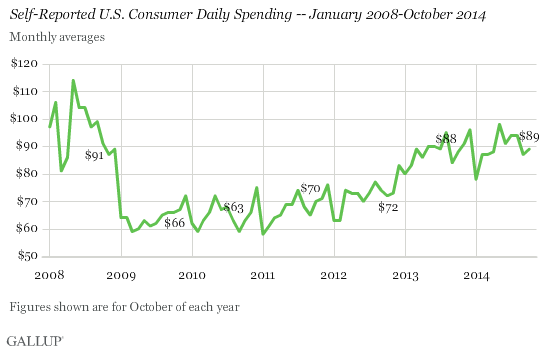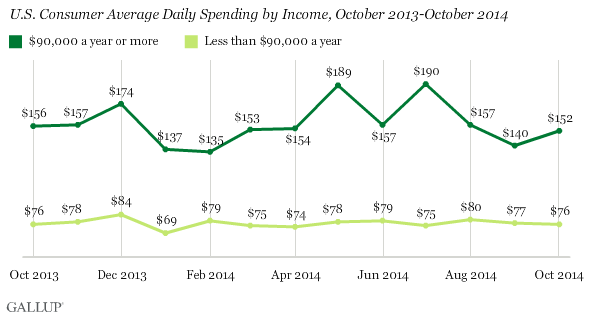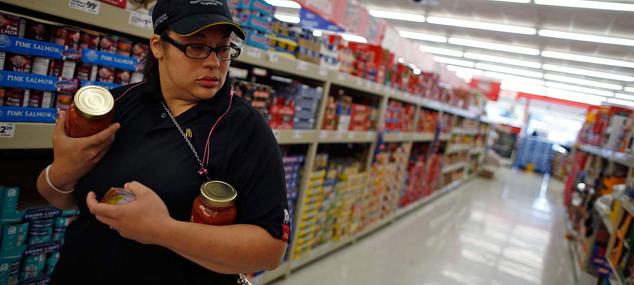Story Highlights
- Average daily self-reports of spending flat at $89
- October 2014 spending average similar to October 2013
WASHINGTON, D.C. -- Americans' daily self-reports of spending averaged $89 in October, versus $87 in September. Spending last month is similar to what it was in October 2013 ($88), but it remains well above the lower levels Gallup measured from 2009 through early 2012.

The October 2014 consumer spending figure is based on Gallup Daily tracking interviews with more than 15,000 American adults throughout October. The poll asks Americans to report on the total amount they spent "yesterday" in stores, restaurants, gas stations or online -- not counting home and vehicle purchases, or normal monthly bills -- and provides an indication of Americans' discretionary spending.
Unlike the drop often seen in the month of September, spending is often fairly flat in October. In the nearly seven years in which Gallup has tracked average self-reported daily spending, only once has there been a change between September and October that was larger than $5. This happened in 2008, when spending dropped from an average of $99 in September to $91 in October as the financial crisis deepened.
Small Growth in Spending Among High-Earning Americans
Spending among upper-income Americans increased slightly in October to $152 per day from $140 in September. This is still lower than several other monthly averages in the past year among Americans with annual household incomes of $90,000 or more. It is similar to the average spending among upper-income Americans in October 2013 ($156).

Spending among middle- and lower-income Americans, those whose annual household incomes are less than $90,000, was $76 per day in October, little changed from recent months. Spending among these Americans, who make up the bulk of U.S. consumers, tends to be more stable and has historically been lower than what is seen among higher-income Americans.
Bottom Line
Although consumer spending was generally stable in October, it remains higher than the levels found during the depths of the recession and its immediate aftermath. Consumers may be benefiting from low gas prices, and may be able to use more of their discretionary spending on other things without increasing their overall spending.
Looking ahead, Gallup's historical spending estimates in November are typically on par with the October averages. Therefore, November may well show another month of stable but still relatively healthy spending. Typically, spending spikes in December during the holidays.
Gallup's initial estimates of Christmas spending are also relatively positive, and if they hold, 2014 would be one of the best years of U.S. consumer spending since the recession.
Survey Methods
Results for this Gallup poll are based on telephone interviews conducted Oct. 1-31, 2014, on the Gallup U.S. Daily survey, with a random sample of 15,233 adults, aged 18 and older, living in all 50 U.S. states and the District of Columbia. For results based on the total sample of national adults, the margin of sampling error is ±1 percentage point at the 95% confidence level. The margin of error for the spending mean is ±$4.
Each sample of national adults includes a minimum quota of 50% cellphone respondents and 50% landline respondents, with additional minimum quotas by time zone within region. Landline and cellular telephone numbers are selected using random-digit-dial methods.
Learn more about how the Gallup U.S. Daily works.

